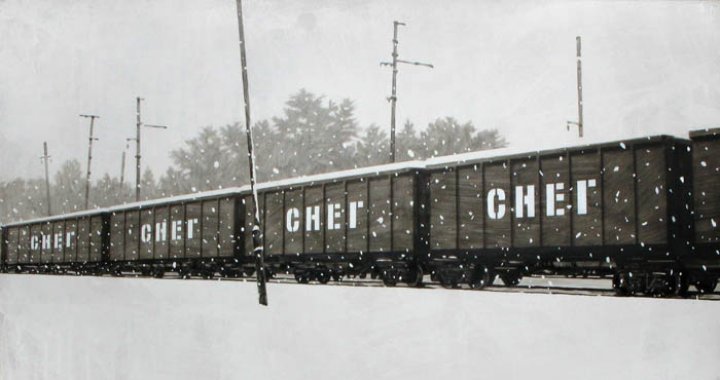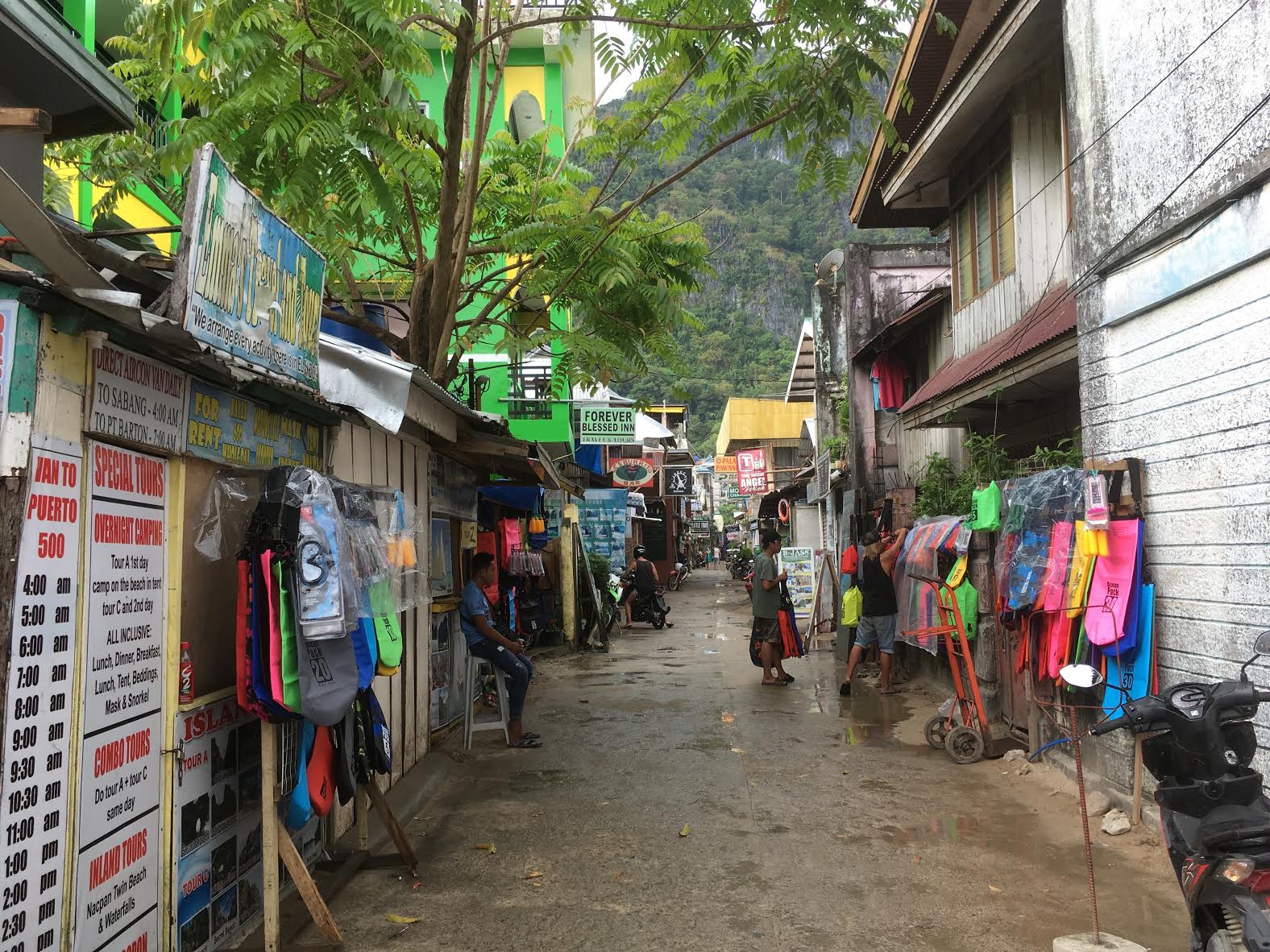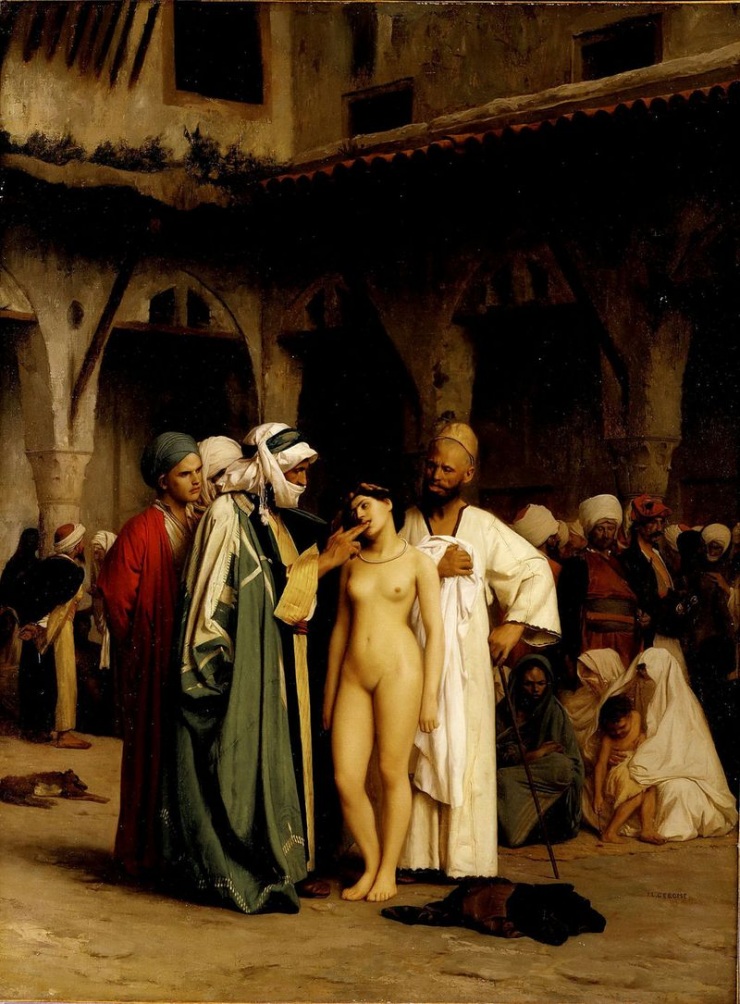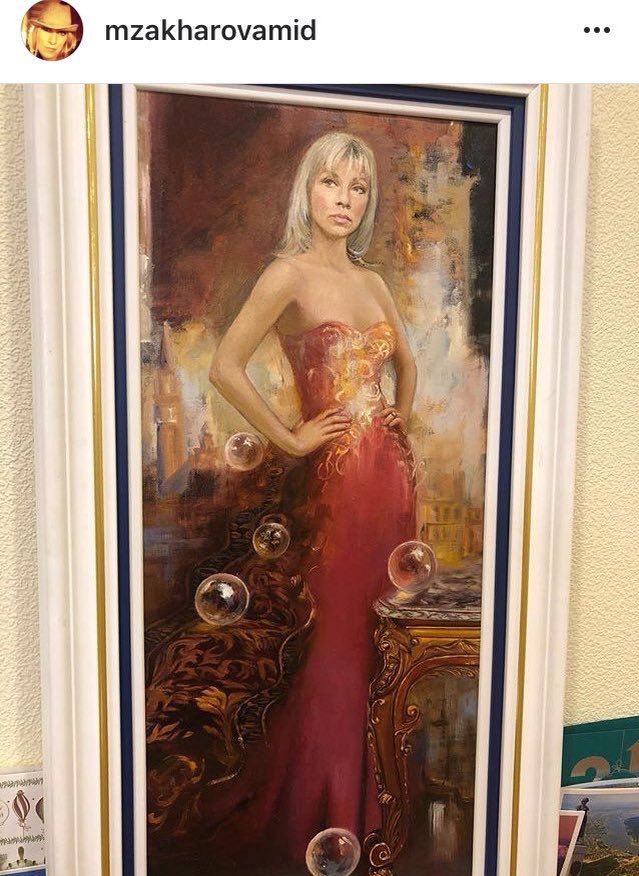
Art diary. Endless winter of 2018
16/02/2018
January 18, 2018
The last day in El Nido I spent walking around the town, if you can call it that. The unbearably sad trash made up of wood, tin and plastic was scraped to the sides of the few uneven lines along the shore, the pseudo-villas and bungalows were stuck randomly here and there. The architects exerted themselves here in vain, if they aimed for anything at all, of course. The forms are impossible to discern plus there is the exuberant tropical greenery. Sure, there are a few hotels that were built here, but the trash masks those too. There is only trash and dirt. The music is horribly loud everywhere, a mix between resort tracks a la Buena Vista and other tropical beats with sprinkles of lounge, trance and downtempo. The first type is for the vacationing accountants, the second is for the vacationing creative designers (I saw a funny place in El Nido: “Designer Hostel”). It's a good thing I was not being nosy all those days and for my needs only appeared in town after sunset to eat or to buy something. During the day I kept getting a serious case of Russian populist vibes; despite the heavenly climate it is impossible, inconceivable and unbearable to see the majority of human beings here living out on the streets without a roof over their heads. Human beings that live without hope, albeit their grace and soft elegance dancing around the white vacationers, always asking “what would you like, sir?” If I were in their place I would slit the vacationers' throats, especially the young ones, full of themselves and 'progressive'. Our conscience, our conscience – this is where we suddenly remember Annensky. That's all lies of course, just have a look at yourself as you tickle the ethical lump with a palm leaf, you goddamn Tolstoyan, walking around, creating important plans for the reconstruction of the “Third World”, aiming towards justice and kindness like some kind of stray Fourier. I got mad at myself and went to my guesthouse to wait for the rickshaw to take me to the airport.


El Nido. Writer’s photos
But what is really interesting is the idea of the “beautiful poverty”. Like all things ethical and social (besides the political, obviously), it was created neither by philosophers nor by social reformers, but by painters. Who, if not the painters, would think up an idea of something artistically beautiful, in other words something that can be presented in the form of forever aesthetically attractive while being shown. The East is exotic. The North is harsh. Poverty (not everywhere, just in the South) is picturesque. As if they have it good anyway, the barefoot lazzaroni, the Arab boys in rags, the merry Polynesians. The sun is shining, edible food is hanging on a branch just above your head, the background consists either of the sea or of a beautiful ancient ruin. Life is great, my friends, despite the dirt, the violence, the injustice, the doomed cycle of reproducing poverty. Just look at the ideal facial features of the tanned faces! No no, we don’t cost even the dirty pinky finger on these poor people, we who live in abundance, who reproduce abundance, well-intentioned and cultural. What do we have left except to buy their picturesqueness (in other words, their poverty) for cheap: to fuck boys in Tangier, to take girlfriends out of the Philippines, to introduce enlightened northerners to their beautiful, truly folk music? To suck coconut milk through a folded bill, so to say, from a fruit that was hurriedly brought by a native. And obviously to paint it all. That’s all just romanticism, he made it up. Baroque people, people from classical art were not exactly indifferent to the picturesque poverty of the sunlit regions, they saw poverty as just poverty, colonies as just colonies, the exoticism of a foreigner as just the exoticism of a foreigner. It was all fair. They didn’t emotionally weave themselves into a stranger’s situation, they just used it for their own maximum benefit. But we are romantics, and that’s the point of departure for everything else, from putting “character” into different races and nations to using those made up “national characteristics” for their own cynical goals. For me, the cold and detached Scottish legalist from the 18th century is much better as he coherently proved in court the need for the release of a Jamaican slave who was accidentally brought to Britain (no, much more decent) than the romantic screams about oppressed nations who we need to sympathize with because they are "the same as us”.
That is the difference. In the 18th century we have the logically calibrated “we are people”. From the beginning of the 19th century it changes to “they are also people like us”. This whole division between us and some kind of “them” - “others” with the indispensable eternal characteristics (merriment, picturesqueness, full of love, lightheadedness, ability to sing, and so on) was what had brought the current deterioration.

Jean-Léon Gérôme. The Slave Market. 1866
And as an illustration of this deterioration we have genre painting with the very same barefoot Italian boys and the mysterious girls from harems. But in the case of harems it is actually easier: they weren’t dreaming of harems per se, but rather of group sex, the resources for which few people in Europe and North America had at the time (plus the courage needed, just imagine an orgy in Manchester or Frankfurt in the year 1857, for example!). Here it is impossible to do, the best you could try was a brothel or get a concubine, but “there" it is possible. Eh. "Sarah, people have golden toilets!" Picturesque poverty in paintings from the 18th to the 20th century was just advertising of cheap and seductive goods. Here they are: alive, explicit and attractive, we’ll just wash them slightly and screw them. In actuality we are still screwing them to this day, no matter how it is actually called nowadays. The most disgusting thing in El Nido are the ugly Europeans and Americans with bovine or rooster necks, with flabby or inflated bellies proudly stepping along with their pretty Filipino girls bought from the marriage market. To draw this scene, not even to take a photo of it but to draw it without any ploys, just to draw it well, "realistically", for the “people”; then to create twenty portraits of such couples, calling the whole idea 'Modern Slavery’ and then make an exhibition with a catalog. An even better idea would be to make it a traveling exhibition; let them see themselves in those portraits: in Dallas, in Des Moines, in Stockholm, in Birmingham, in Essen. But they would not notice themselves, that's the problem. What they would notice, what they would scream is something along the lines of “Wow, what, you think this is a problem? Here in Washington we have Trump, in Syria we have ISIS, there are hordes of immigrants, iOS failures, plus Woody Allen has turned out to be a sexual predator, oh man, how can we endure it all?" And it wouldn’t cross their minds, as Blok would say, that this is retribution.
January 20, 2018
(In addition to the previous comments) Let us have a look around any museum with paintings from the 19th or the beginning of the 20th century and we would see that their poverty is picturesque whereas our poverty makes us feel sadness, resentment, and an urge for change. That’s one of the pillars of modern conscience.
January 25, 2018
After my vacation I caught a horrible flu and I’ve been lying in bed for the fifth day in a row, I don’t even have the strength to make myself food. Either way I am not even hungry. The flu is making me feel all the littlest details of my body; I can feel pain in every joint, the aching of every bone, the tenseness of every muscle; all the sleeping illnesses are waking up and lining up to perform first on the grand stage after Señor Influenza takes his bow. In some way the flu is similar to the detailed anatomical drawings of the 17th-19th century: vivid, thorough, mechanically cruel.
When you are being painfully pulled on all the strings of your body and you don’t even have the strength to twist to the side, what else is there to do but to think of art. Ars longa, vita brevis. Yesterday I saw on Twitter that some British journalist posted a photo of his room in a Kiev hotel. There is a painting above the bed with an attractive lady on it, half-covered either by rags or by bushes (unclear); the lines and the hair look exactly as they should on a painting in a provincial brothel. I thought, well, actually this is realism, this is figurative painting, the forms are all in place, the tones are either Serov’s or even Renoir’s, so I shouldn’t have thought of a brothel. In other words, this is exactly “art”, if we are looking at it from a statistic point of view. The majority of people, even in very progressive countries, imagine this as the “real" art, although they’ve been taught from the youngest possible age to love “contemporary art”. I am not being arrogant here, it is just a fact. And then I remembered that about two weeks ago I randomly saw a photo of a woman from the Russian Ministry of Foreign Affairs, something like a press secretary. She is known for being rude and for her remarkable talent for doing the “Kalinka” dance. So in this photo she is standing in front of a painting of herself, and her portrait is done in the same style as the painting in the Kiev hotel room. Sure, she has more clothes on and you can distinguish Shilov’s influence here, but the essence is one and the same. This is realism, this is figurative painting, this is pretty.

So I am lying here thinking that this art will take revenge, or rather, it is already taking revenge. “It”, together with the people who consider “it” to be the real art, is starting to avenge the years of disdain with which High Art (late modernism) and Contemporary Art regarded pretty portraits and cute landscapes. Let’s call this art “popular art”, as it is different from “Naïve art” in which self-taught artists are no different in their skills from the viewer. In “popular art” the specially trained people are painting the Beautiful according to the tastes of the masses. Everything is done honestly. But the main condition that allowed the existence of this "popular art" as an industry was its refusal of any demands to be in the spotlight of High Art. And no one doubts that this is a huge industry, from artists in berets on Montmartre or Charles Bridge to the production of the same hotel or restaurant canvas splashings or official and semi-official portraits. This art exists but it is in the shadows and it is not discussed. It is widely adored but for one to admit so is not comme il faut. That was the so-called social contract. However now this situation is coming to an end.
Largely due to the events in 1968 which re-shaped western European consciousness, there has been a consensus roughly for the last 50 years that art was what was created up until the early 70s, and what art is now, in other words "contemporary art". (“Old art and new art”, although the selection was not always strict, for example you can “discover the previously unfairly forgotten” second-rate painter, like they “discovered” James Tissot, and he’s already among the local saints) Into the second category they only accept artists grudgingly, and those can only be members of the “contemporary art world” not just artists living here and now. In other words, the public had a choice. Today’s art is current, contemporary and that is the law or a fact of life, you can’t wave it away. The public walking into a contemporary art gallery or museum should already expect not just any old thing, but performances, installations, video art, mounds of trash, strange objects on the floor and so on. Paintings are allowed but only of a certain kind. But if the public wants to look at Beauty, the public has to visit the Old Masters museum or a collection from the beginning of the 19th to the 20th century. As far as Braque, Picasso and the fauvists are concerned, the viewer can simply shield their eyes and run to the neighbouring halls with Impressionists, Dali, and many others. The merger rations of the “beautiful" on which the public is fed in the places of contemporary art is easily compensated by the Louvre, the d’Órsay plus a little bit of the Centre Pompidou. This is on a level that the public can accept. And on the normal-European-dweller’s level… they almost always bring home a Parisian landscape painting of the Notre Dame.
Those times were blissful. In general, I think that we lived in this paradise up until about four years ago in Europe (west of Brest-Litovsk and north of Bucharest), however that is a separate conversation. But now the paradise is over. The common man has rebelled and said that he doesn't care about the old consensus, including the political, the ethical, and the cultural. He votes for those that are like him, who openly say: stop pretending! Let's be real without all this liberal stuff. It is natural to hate the outsider. It is natural to love real money rather than more abstract values. And it is natural to love a beautiful painting.
These guys have a big future. What could be nicer than for malice to go unpunished, especially when smart ladies and gentlemen feel sorry for you and say “we must hear the voice of the majority that has stayed silent”. Do you want to hear our voice? Just wait!
This new epoch will have its own art; actually, it already exists, which is popular art that has come out of the shadows. In new circumstances its name has a different meaning, which is that “popular” means “for people”. In this “people's love” everyone came together: the lady from the Russian Ministry of Foreign Affairs, the anonymous inhabitants of the hotel beds in Kiev, and the hotel administrators, maids and so on. This art is loved by everyone and that means it is the only possible one. As soon as this is said aloud (and it will be, I'm sure), contemporary art will come to an end. After all, it is by public consensus that three bricks on the floor or a calf sawn in half is considered "art". This consensus has disappeared and the "artwork" label will also disappear.
We will face a lot of new, unexpected and horrible things.

Rinat Voligamsi. Snow. 2013
January 31, 2018
I was passing through Moscow for a day and a half. As per usual I fell into depression from the surprising ugliness of this place, the ugliness of the indifferent, the automated and the self-generating and self-growing. Perhaps “bleakness” is a better term than “ugliness”. The area is covered in houses but it is actually striving to be deserted and empty. This emptiness would be bordered by empty boutiques and packed shopping centers, and within the borders would be avenues for the expensive cars belonging to bosses and the militia. People are expected to be here only for two reasons: underground dwellers of the metro, morlocks, gloomy crowds wandering along the endless underground tunnels between the Boulevard Ring and the main street, the people of shopping centers and chain eateries. This is the local version of the brave new world, strangely incarnating Huxley's utopia rather than Lenin’s or the Bolsheviks’, and not Orwell's dystopia. The revolution really ended here, it died out without a trace, there isn’t even a corpse left, because even Lenin's corpse is not the corpse of the revolution, but actually a zombie of the old Russian idea of power, the pre-Petrine despotic Russia, plus, of course, the achievements of science. Ilyich in front of GUM is just a wax embodiment of Russian power, don’t think for a second that it embodies the revolution. I remembered suddenly that when I was four my mother, having traveled with me to Moscow, dragged me to the mausoleum in the few hours we had between the train from Gorky and the plane heading somewhere south. (Here is another definition of Moscow: "the place of transit”) I do not remember anything, but my mother told me that having braved the long queue we finally got inside, and amidst the silent awe and what seemed like quiet music playing there, (Is there actual music playing or was it ever played at the mausoleum? That’s a good question. And if yes, what is the soundtrack?) I loudly asked: "Mom, where is uncle Lenin’s candle?” followed by confusion, shushing, and us quickly retreating away from the misdeed. But if you think about it, my reaction was completely accurate historically, ideologically, and aesthetically. Here lies a corpse. People walk past it. Therefore it is a kind of ritual of a religious kind, besides what other rituals with corpses are there except religious? We are in Russia, a country where lit candles are put in the rigid fingers of corpses. Lenin does not have a candle. Accordingly, this image is not complete, it is not finalized, and although this art object was placed in the heart of the Russian world on the Red Square, Lenin is not aesthetically perfect. We need a candle and that's it.

The first wooden mausoleum on the Red Square. Moscow, 1924
It seems that in 1968, right after the celebration of the 50th anniversary of the Great October Socialist Revolution, I figured out that the Great October was done, finished without a trace. You can see I was a provincial boy, where did it all go?
And now it’s been another 50 years, so the Great October is now 100 years old. In the 1960s people celebrated this anniversary grandly due to obvious reasons. And actually there were only three years between celebrating the 50th anniversary of the Great October and the 100th anniversary of the Great Leader’s birthday. I can only imagine these celebratory budgets and how writers, sculptors, artists and others supplying culture to the authorities profited. But now, 50 years later, if any money was spent on the Great October, then probably only to make the event less interesting and less important, and to bury it in the trash of dull TV shows, boring exhibitions and so on. But therefore the revolution is still alive if people are afraid of it. And maybe it is more alive now than in the years between 1967 and 1970, when it was painlessly managed on a government levelwithout any influence on anything, and in such a way that few people acknowledged it and fewer still took any interest in the event. Yes, it seems that 50 years ago the revolution and its leader became white noise of everyday life, a slightly annoying background and nothing more.

Rinat Voligamsi. Two Men with the Suitcase Transporting Mausoleums. 2011
And here I am in Moscow watching last year's cowardly anniversary of the revolution folding away. The Tretyakov Gallery on Krymsky Val was already closing the exhibition called "Someone 1917". I saw it at the end of October, and then in early November in St. Petersburg together with two more exhibitions for the anniversary in the Benois wing. It seemed that they were all done by the same person, a conventional associate professor of art history, his speciality being the "Russian avant-garde". These exhibitions are not just boring, they are blasé, similar to an early post-Soviet PhD thesis on Russian art history full of quotations from previously censored Russian religious philosophers, the well-known specialists in the so-called Enigmatic Russian Soul. It seems that everything is authentic here: the works are textbook and reliable, featuring Filonov & Malevich, Repin & Petrov-Vodkin, The Death Of The Commissar, Suprematism, plus they diluted it a bit by realists and by all sorts of pious Nazis like Nesterov, so should we throw the words out of that song? But it was art history and not art, "artists of the times of the Revolution", and not "Revolution and its art.”
However, it was good to go see it, and now it’s a good idea to remember it and think about it. The strangest thing about this extremely overrated (I have to say, I don’t care if they lynch me, it is, let’s say it one more time, o v e r r a t e d) Russian avant-garde is that its main characteristic is not “revolutionary” but “nationalistic”. And we open up the field wider, we see that Russian art of the first 20-something years of the previous century is, with a few exceptions, nationalistic no matter what its direction. Here a few things cross over: Russian modernism, Russian avant-garde (those two are different things of course) and even “realism”. Around the time of the year 1917 you couldn’t find any internationalism in Russian art. It’s interesting to notice that in this connotation (and in the connotation of some unbearable, rotten, sickly-sweet vulgarity) “Philosophers” and Nesterov's “Russian soul” are things of the same sort as Burliuk’s portrait of Kamensky.
Actually the term “Silver Age” should be rebranded as the powerful art direction of modern Russian nationalism. The border lies somewhere near Chekhov, Repin, Fet and similarly near Blok, Kustodiev and even Bunin. The amazing and unexpectedly nice exclusion is Gorky. Actually the more we think about the “Silver Age”, the “Russian avant-garde” and so on, the more we feel admiration for the real internationalist like Lenin, Trotsky, other Bolsheviks and even Gorky. The Russian Revolution termed itself universal and for everybody, capable of changing the basis of life for all mankind (and the basis of its art too), but it turned out to be a purely local phenomenon; it all came to an end with some kind of Moscovian Rus' with kings, priests, boyars, godparents and oiled beards of the royal guards.